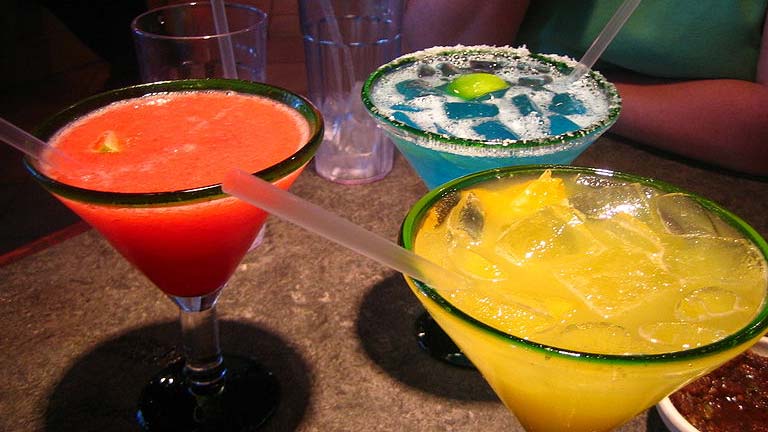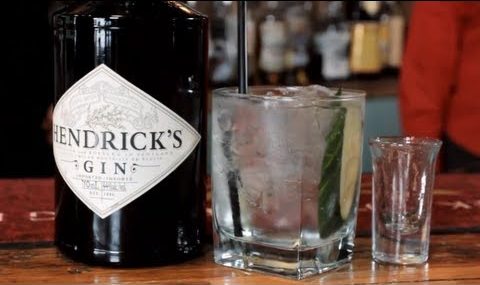When investigating alcohol from an historical viewpoint, one of the key alcohol facts is that people have known about alcohol and have been drinking alcoholic beverages for the better part of 10,000 years.
Even though alcohol has been used in a number of different of ways throughout human history that can be called “beneficial,” it was, nonetheless, understood thousands of years ago that excessive drinking and abusing alcohol can lead to significant social and personal difficulties.
Since these alcohol facts have been known for many centuries, why, therefore, is it that so many individuals worldwide suffer from the deleterious, unhealthy, and at times deadly consequences of alcohol poisoning, chronic alcohol abuse, and alcoholism?
Looked at from another perspective, what is it about drinking that leads so many people to engage in abusive and irresponsible drinking behavior?
Do problem drinkers really need more information about alcohol abuse and alcoholism facts so that they can drink more moderately or quit drinking entirely?
A Basic but Significant Question: What is Alcohol?
The alcohol that people drink at bars, parties, or at other social functions is called ethyl alcohol or ethanol.
Ethyl alcohol is produced by fermentation, a process in which yeast fungus feeds on starches and/or sugars in different grains (such as rice, hops, or barley) or fruits (especially grapes) and excretes alcohol along with carbon dioxide (CO2).
Simply put, ethyl alcohol is a depressant drug and not a stimulant as advocated by many people. Maybe this fact helps explain why so many people become depressed when they drink to an excess.
From a different vantage point, this may also help explain why so many people exhibit alcoholism and depression at the same time.
The concentration of alcohol in most drinks varies quite a bit depending on the type of drink.
For instance, while hard liquor typically has an alcohol content of 40% and can go as high as 95%, wine and beer, on the other hand, usually have an alcohol content between 5% and 15%.
From the least expensive beer to the most costly after-dinner wine or liqueur, all alcohol is made from the same basic fermentation process.
The various strengths, flavors, colors, and tastes, however, come from the different vegetables or fruits that are employed as well as from the by-products, additives, and the diluting substances used in the fermentation process.
As a note of interest, the fermentation procedure used in alcoholic beverages is the same process that will take place with grape juice, apple juice, orange juice, or other fruit juices that are left to sit without being consumed.
When an individual drinks an alcoholic beverage, approximately 80% of the alcohol is absorbed in the small intestine and roughly 20% is absorbed in the stomach.
The type of drink, concentration of alcohol, and whether the stomach is empty or full influence the speed at which the alcohol is absorbed.
After the alcohol is absorbed into the tissues, it affects a person’s brain and their body.
It typically takes about 20 minutes after having an alcoholic drink for an individual’s blood alcohol concentration (BAC) level to increase. After the alcohol is absorbed, it exits from the body in three ways: via the kidneys, the lungs, and via the liver.
A Brief Historical Perspective About Alcohol Use and Alcohol Facts
Even though it not known precisely when alcohol was first consumed, the discovery of late Stone Age beer jugs, nevertheless, shows that deliberately fermented alcoholic beverages existed at least as early as 10,000 B.C.
This means that people have known about alcohol and have ingested alcoholic beverages for at least 10,000 to 12,000 years!
Other historical references include the following:
In ancient Greece, by 1,700 B.C. wine making was so common that, similar to other places in the old world, it became an important component of religious rituals, it was used socially, it was used for medical purposes, and it became a commonly used with daily meals.
In ancient China, it was believed that the consumption of alcohol in moderation was prescribed by heaven.
In Sumeria, wine and beer were used for therapeutic reasons as early as 2,000 B.C. In Babylon, as early as 2,700 B.C, the Babylonians worshiped wine deities. Moreover wine and beer were used on a regular basis as offerings to the gods.
In Ancient Egypt, the Egyptians believed that Osiris, the god of wine, also invented beer, a beverage that was so much a part of Egyptian culture that it was brewed daily in the home.
The Bible, (Genesis 9:20) states that Noah planted a vineyard on Mt. Ararat.
The Abuse of Alcohol
While alcohol has been used in a variety of ways that can be called “positive,” it was, however, realized thousands of years ago that abusing alcohol and too much drinking usually led to personal and/or social problems.
For instance, the writings of Plato and Aristotle show that both of these famous philosophers were critical of drunkenness. And recently in China, a manuscript was found that originated approximately 650 B.C.
This document discussed how hard it was for people to do without beer and also included warnings of the “abuse” of beer!
The Negative Effects of Alcohol Abuse and Alcoholism
Moving forward to Europe, in 1596 in France, an adviser to Henri IV announced that too much drinking ruined families and homes.
In a document published in 1647, a Greek monk articulated that excessive drinking was damaging to the brain and to the nerves and significantly contributed to numerous medical problems such as paralysis, trembling, convulsions, and uncontrolled bleeding into the brain or into another organs of the body.
It is interesting to point out that more than 350 years ago in Europe, a few insightful people actually documented information about the results of excessive alcohol ingestion that in modern-day terminology would be classified as “alcohol side effects,” the “DTs,” “alcohol overdose,” “alcohol withdrawal,” and “alcohol poisoning.”
In 1667 in France, a medical thesis was written that discussed the beneficial aspects of wine and also focused on characteristics that are damaging to a person’s health such as trembling hands, memory loss, gawking expression, sleep disruption, lethargy, ulcerated eyes, and erratic gait.
Even though this document contained a variety of clinical observations that were justifiably associated with excessive alcohol ingestion, unfortunately, the knowledge and information in this manuscript about the deleterious consequences of excessive drinking did not become widespread.
Fast forwarding to 1920 in the United States, this time period marks the beginning of Prohibition. At this time the 18th Amendment to the Constitution had been officially ratified with the intention of ending the dangers related to drinking.

For instance, around this same time one writer stated that excessive drinking was similar to “Grappling with the Monster” and called abusing alcohol the “Curse.” According to this writer, the only cure was total abstinence.
It is interesting to point out that the dangers associated with drinking excessively during the 1800s and the early 1900s in the United States were essentially perceived from a social orientation.
More to the point, excessive drinking was seen as related to crimes, family violence, poverty, public disorder, and incompetence in the workplace.
It must also be articulated that some individuals, however, did think that excessive drinking, especially rum, could result in death. Even though a few people proclaimed warnings about excessive alcohol ingestion, their voices, unfortunately, were not heard.
Information About Alcohol Facts and Alcohol Statistics
Many of the dangers of alcohol abuse and alcoholism do not fully make an impact on people’s awareness until some relevant information about alcohol facts and alcohol statistics are explicitly stated.
It is with this in mind that the following alcohol facts and alcohol statistics are included. For instance, according to a study initiated by The National Center on Addiction and Substance Abuse (CASA) at Columbia University in 2005, the following alcohol statistics and alcohol facts were revealed:
56% of students in grades 5 through 12 say that alcohol advertising encourages them to drink.
Alcoholism research statistics show that the 9.6% of adult alcoholics drink 25% of the alcohol that is consumed by all adult drinkers.
In the United States during 2004, 16,694 deaths occurred as a result of alcohol-related motor-vehicle crashes. This amount was approximately 39% of all traffic fatalities. This amounts to one alcohol-related death every 31 minutes.
Those who suffer from chronic pain can face more immediate problems from the use of alcohol, especially if they are taking some other form of pain-killing drugs — even those that can be purchased over the counter.
According to a 1999 Federal Trade Commission study, alcohol placement has occurred in PG and PG 13 movies where the primary audience included a large number of children and teens.
Since alcohol poisoning happens at least 50,000 times in the U.S. per year it is important to know what to do if you experience someone who is overdosing on alcohol.
Approximately 9.7 million current drinkers in the United States are between the ages of 12-20. Of these young drinkers, 18.7% are binge drinking and 6% are heavy drinkers.
Excessive drinking contributes to illness in each of the top three causes of death: strokes, cancer, and heart disease.
Every year in the U.S., 1,400 college students between the ages of 18 and 24 die from alcohol-related accidents and injuries, including vehicle accidents.
The 25.9% of underage drinkers who are alcohol abusers and alcohol dependent drink 47.3% of the alcohol that is consumed by all underage drinkers.
Underage drinking is a major national problem, with estimates suggesting that by the 8th grade one-fourth of all adolescents have consumed alcohol to the point of intoxication.
It is alcohol facts and alcohol statistics like these that give almost immediate impact to the destructive, unhealthy, and at times the fatal consequences of alcoholism, alcohol poisoning, and chronic, abusive drinking.
Alcohol Abuse and Alcoholism: Alcohol Deaths
Chronic alcohol abuse and alcoholism can lead to a number of alcohol deaths. In some instances, chronic and abusive drinking leads directly to a fatality (such as death via alcohol poisoning) while in other instances, such as cancer, the association may be indirect, but fatal nonetheless.
 In other words, repeated excessive drinking may lead to cancer, which eventually leads to the individual’s death.
In other words, repeated excessive drinking may lead to cancer, which eventually leads to the individual’s death.
The key point in all of this is the following: alcohol deaths are responsible for thousands if not millions of people every year losing their lives directly or indirectly due to chronic, abusive drinking.
Alcohol Deaths From a Direct Causation Perspective
In some instances, alcohol abuse and alcoholism are directly responsible for alcohol deaths. Examples include alcohol-related traffic fatalities, alcohol-induced organ malfunction, and alcohol poisoning. It appears that many people do not realize the danger that is involved in drinking excessively only a few times per year.
The “alcohol facts” are, however, that engaging in binge drinking even once can result in an alcohol overdose. Indeed, approximately once every week, someone in the U.S. dies a needless and fully preventable death due to alcohol poisoning.
Alcohol Deaths From an Indirect Causation Perspective
In most instances, abusive and excessive alcohol consumption indirectly leads to alcohol deaths. Keep in mind, however, that this does not mean that chronic alcohol abuse and alcoholism are any less responsible in the outcomes.
Indeed, if alcoholics drink hard enough and long enough, it is almost a guarantee that they will lose their lives to an alcohol-related medical condition, illness, or disease.
The following list represents the various kinds of cancer that are directly or indirectly caused by chronic alcohol abuse and/or alcoholism. Keep in mind that death is not inevitable with a person who has cancer. The point of emphasis here, however, is on people who have died from cancer that was directly related to long-term alcohol abuse and/or alcoholism.
- Kidneys.
- Colon.
- Rectum.
- Stomach.
- Liver.
- Throat.
- Esophagus.
- Larynx.
The following is a list non-cancerous medical conditions, diseases, and illnesses caused directly or indirectly by alcohol abuse and/or alcoholism.
Again, the point is that chronic alcohol abuse and alcoholism lead directly or indirectly to the following medical conditions and illnesses, all of which can and do result in fatalities.
- Diabetes.
- Kidney and urinary tract infections.
- Brain damage.
- Pneumonia.
- Ulcers from the perforation of the stomach and the intestines.
- Cardiovascular problems such as strokes, cardiomyopathy (damage to the heart muscle), heart failure, and high blood pressure.
- Organ and system malfunction.
- Wernicke’s disease (a memory disorder).
- Infections.
- Kidney failure.
- Cirrhosis of the liver.
- Pancreatitis.
- Coma.
The point in the above discussion is this: chronic, excessive, and abusive drinking has observable and predictable negative consequences and many of these negative effects result in alcohol deaths.
Linking Medical Problems to Alcoholism
 Focusing on the consequences of excessive drinking from a medical standpoint received a major shot in the arm from an American doctor named E.M. Jellinek.
Focusing on the consequences of excessive drinking from a medical standpoint received a major shot in the arm from an American doctor named E.M. Jellinek.
In 1937 Dr. Jellinek developed the now famous taxonomy of medical problems observable in chronic alcoholics. It is interesting to note that Dr. Jellinek was involved in some of the early alcoholism research studies initiated by the World Health Organization.
In fact, it was essentially due to this working relationship that the World Health Organization in 1952 utilized Dr. Jellinek’s definition for the term “alcoholic” in their own documents: “Alcoholics are those excessive drinkers whose dependence on alcohol has attained such a degree that it shows notable disturbance or an interference with their bodily and mental health, their personal relationships and smooth economic functioning or who show prodromal signs of such a development. They therefore need treatment.”
Based in large part on Dr. Jellinek’s pioneering work, it can be concluded that information about alcohol facts and concepts such as alcohol treatment and alcohol rehabilitation were being stated and developed in the United States nearly 70 years ago!
A great deal of the early work by Dr. Jellinek and others who possessed a special “alcohol awareness” has been greatly influential in many of the current programs and policies concerning the chronic use and abuse of both alcohol and drugs.
Not only this, but the work of Dr. Jellinek and some of the other early alcoholism pioneers has given input into the creation of some of the drug and alcohol laws that currently exist in the United States.
It is also evident that Jellinek’s work had more than a little impact on modern concepts such as “blood alcohol content,” “blood alcohol level,” and the entire alcohol testing movement.
In a word, many of the alcohol facts and the alcohol statistics discovered by Dr. Jellinek define many of the current focal points in alcoholism research and in the treatment of alcoholism.
Alcoholism: Doctors in the 1950s and Doctors Today
While it can be concluded that doctors in the 1950s were cognizant of the association between alcoholism and diseases such as hepatic cirrhosis, gastritis, and the breakdown of the liver, doctors today are more informed about the many diverse ways in which the different organs of the body are adversely affected by chronic, long-term alcohol dependence.
Today’s doctors are also more knowledgeable about other important alcohol-related problems such as fetal alcohol syndrome.
Conclusion: About Alcohol Facts
When looking at the study of alcohol from an historical perspective, one of the key alcohol facts is that even though alcohol has been used in a number of different ways throughout much of human history that can be called “useful,” thousands of years ago some observant and insightful people also realized and articulated some of the damaging and dangerous consequences of heavy drinking and alcohol abuse.

For example, a recently discovered Chinese document written around 650 B.C. not only stated how difficult it was for people at that time to do without beer but it also provided warnings about the “abuse” of beer.
About two or three hundred years later, two great Greek philosophers, namely Aristotle and Plato, were explicitly critical of public displays of drunkenness.
It is, therefore, with a certain sense of irony that in spite of the fact that basic information about alcohol facts such as the negative effects of abusing alcohol has been known for centuries, alcohol abuse and alcohol dependence continue to devastate human lives in our “enlightened” and “aware” society.
As outlined above, there are many alcohol facts and alcohol statistics about the negative consequences of repetitive and chronic alcohol abuse and alcoholism. Clearly, these alcohol statistics and alcohol facts reveal the debilitating, destructive, and far too often, the fatal effects of alcohol poisoning, binge drinking, and long-term alcohol abuse and alcoholism.
As a case in point, consider the many alcohol deaths that are directly or indirectly related to alcohol dependency and to chronic and abusive drinking behavior.
In conclusin, as sophisticated and as knowledgeable as our society is, negative alcohol effects such as binge drinking, alcohol abuse, and alcoholism are experienced by millions of our citizens. Moreover, various alcohol abuse and alcoholism statistics and facts have been listed above that give a more realistic picture of the destructive and devastating nature of excessive and abusive drinking.
The important point to keep in mind regarding this article is the following: The more alcohol is consumed in an abusive manner, the more likely it is that the drinker will become an alcoholic. If this describes you, then you need to be honest with yourself and admit that you have a drinking problem.
Once you have taken this step, consider making it a priority to talk with an alcohol abuse and alcoholism professional about getting alcohol treatment as soon as possible.

 We provide the ultimate professional mobile bar service in Austin. We take care of all the details of your events making party planning easier. Looking for a professional bartender to serve you and your guests at your next event or party? All of our Austin bartenders are Texas Alcohol Beverage Control (TABC) certified – meaning they have been tested and certified by the State of Texas. Mobile Bartending is focused on providing high-quality service and customer satisfaction - we will do everything we can to meet your expectations. All of our Austin TX bartenders are covered by our $3 million Liquor Liability Insurance – very important as Texas has a “Host Liability” law on the books!
We provide the ultimate professional mobile bar service in Austin. We take care of all the details of your events making party planning easier. Looking for a professional bartender to serve you and your guests at your next event or party? All of our Austin bartenders are Texas Alcohol Beverage Control (TABC) certified – meaning they have been tested and certified by the State of Texas. Mobile Bartending is focused on providing high-quality service and customer satisfaction - we will do everything we can to meet your expectations. All of our Austin TX bartenders are covered by our $3 million Liquor Liability Insurance – very important as Texas has a “Host Liability” law on the books!




 In other words, repeated excessive drinking may lead to cancer, which eventually leads to the individual’s death.
In other words, repeated excessive drinking may lead to cancer, which eventually leads to the individual’s death. Focusing on the consequences of excessive drinking from a medical standpoint received a major shot in the arm from an American doctor named E.M. Jellinek.
Focusing on the consequences of excessive drinking from a medical standpoint received a major shot in the arm from an American doctor named E.M. Jellinek.




